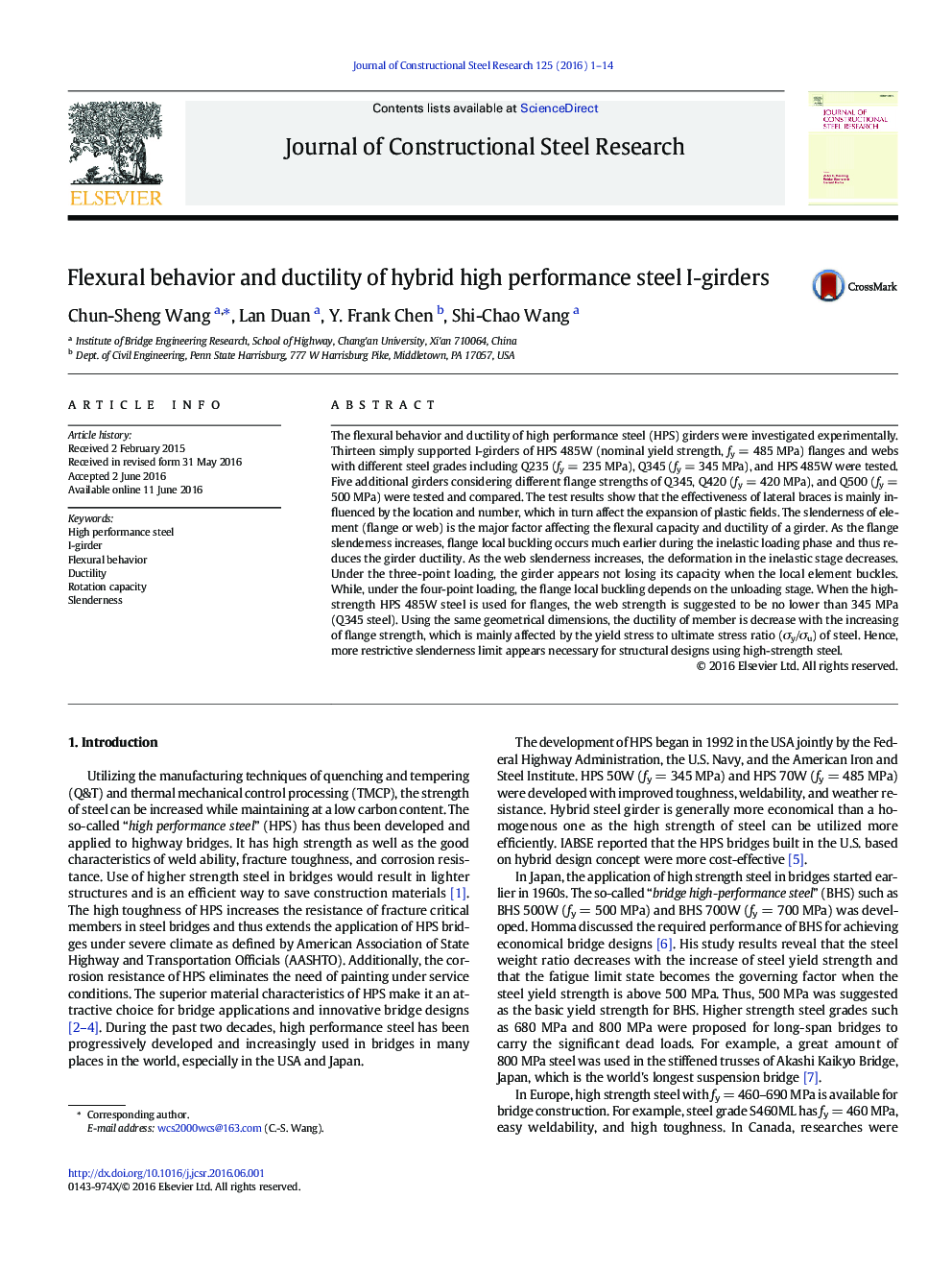| کد مقاله | کد نشریه | سال انتشار | مقاله انگلیسی | نسخه تمام متن |
|---|---|---|---|---|
| 284173 | 509131 | 2016 | 14 صفحه PDF | دانلود رایگان |

• Lateral braces and element (flange or web) slenderness affect the flexural capacity and ductility of a bridge girder.
• Failure mechanism of steel girder in plastic stage is analyzed under nonuniform moment and uniform moment.
• Steel strength matching is suggested in hybrid steel girder design.
The flexural behavior and ductility of high performance steel (HPS) girders were investigated experimentally. Thirteen simply supported I-girders of HPS 485W (nominal yield strength, fy = 485 MPa) flanges and webs with different steel grades including Q235 (fy = 235 MPa), Q345 (fy = 345 MPa), and HPS 485W were tested. Five additional girders considering different flange strengths of Q345, Q420 (fy = 420 MPa), and Q500 (fy = 500 MPa) were tested and compared. The test results show that the effectiveness of lateral braces is mainly influenced by the location and number, which in turn affect the expansion of plastic fields. The slenderness of element (flange or web) is the major factor affecting the flexural capacity and ductility of a girder. As the flange slenderness increases, flange local buckling occurs much earlier during the inelastic loading phase and thus reduces the girder ductility. As the web slenderness increases, the deformation in the inelastic stage decreases. Under the three-point loading, the girder appears not losing its capacity when the local element buckles. While, under the four-point loading, the flange local buckling depends on the unloading stage. When the high-strength HPS 485W steel is used for flanges, the web strength is suggested to be no lower than 345 MPa (Q345 steel). Using the same geometrical dimensions, the ductility of member is decrease with the increasing of flange strength, which is mainly affected by the yield stress to ultimate stress ratio (σy/σu) of steel. Hence, more restrictive slenderness limit appears necessary for structural designs using high-strength steel.
Journal: Journal of Constructional Steel Research - Volume 125, October 2016, Pages 1–14